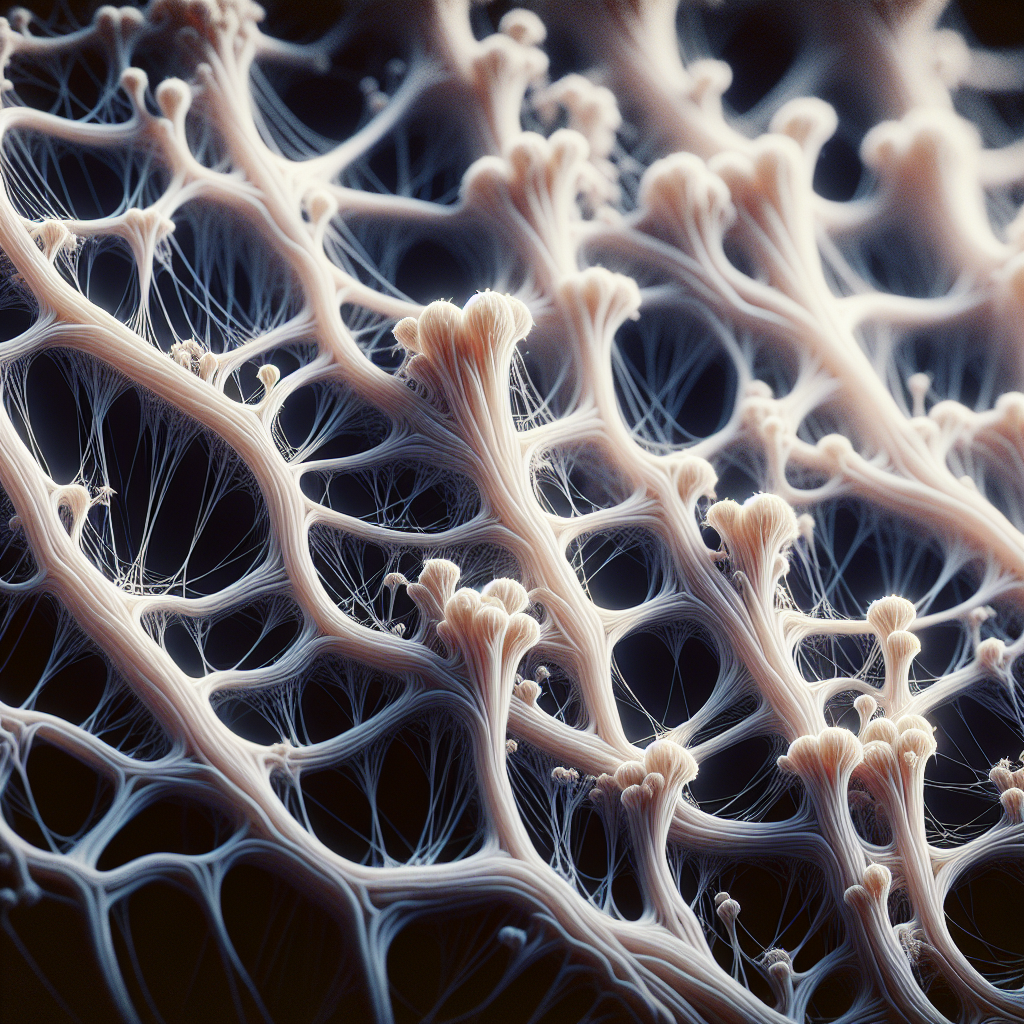As you embark on an exploration of the lifecycle of mycelium, it is essential to grasp the foundational knowledge of what mycelium is, and the role it plays in the growth and survival of fungi. The article “Understanding the Lifespan of Mycelium” provides detailed, scientifically-backed content that unfolds the fascinating intricacies of mycelium’s lifespan. This resource sheds light on how long mycelium can live, intertwined with key factors such as environmental conditions and species variations that influence its longevity. By the end of this enlightening journey, you will have accumulated crucial insights into mycelium’s exceptional durability in the diverse kingdom of fungi.

What is Mycelium?
Mycelium is a network of filamentous cells, known as hyphae, which are a critical part of fungi. It plays an essential part in the survival and reproduction of fungi, serving as a medium through which they absorb nutrients.
Definition of Mycelium
In simplest terms, mycelium is the vegetative part of a fungus. It consists of a complex, web-like network of hyphae that spreads underground, or within the structure of its host substance. Its function is to extract nutrients, supporting the fungus’s growth and maturity.
Role in the Fungal Life Cycle
Mycelium plays an indispensable role within the fungus lifecycle. It facilitates the extraction and absorption of nutrients from the environment, which are crucial in mushroom formation- the reproductive phase of fungi. Moreover, being capable of remarkable expansion, mycelium is chiefly responsible for the colonisation of new territories by fungi.
Types of Mycelium
There are three types of mycelium based on where they grow: substrate, aerial and fruiting mycelium. Substrate mycelium develops within the substance upon which the fungi have taken root. Aerial mycelium is a type that surfaces through the substrate into the air, while fruiting mycelium is responsible for forming the actual fruit body of the fungus or mushroom.
Life Stages of Mycelium
The lifecycle of mycelium progresses through three significant stages, which are the growth stage, fruiting stage, and decomposition stage.
Growth Stage
In the growth stage, the mycelium proliferates and grows continually through the substrate, absorbing nutrients to support fungi’s growth and maturity.
Fruiting Stage
When the appropriate conditions are met, the fungi enter the fruiting stage, where the mycelium generates a mushroom- the reproductive structure of the fungi. This mushroom will eventually release spores, which germinate to produce new mycelial networks, thereby continuing the lifecycle.
Decomposition Stage
In the decomposition stage, the mycelium continues extracting nutrients, breaking down its host substrate in the process. This eventually leads to the death of the mycelium once nutrients become depleted.
Factors Affecting Mycelium Lifespan
Multiple factors can influence the lifespan of a mycelium network, including environmental conditions, the species of fungi, and the availability of nutrients.
Environment Conditions
Optimal environmental conditions, such as adequate temperature, moisture, and pH, are integral to the mycelium network’s lifespan. Any fluctuation in these conditions can unfavorably impact the mycelium’s growth and induce premature death.
Fungal Species
The inherent characteristics of the fungal species also play a crucial role in determining mycelium lifespan. Some species have adapted to survive harsh conditions and have longer lifespans than others.
Availability of Nutrients
Nutrient availability is a critical determinant of mycelium longevity. A nutrient-rich environment can create a healthy, long-lived mycelium network. Conversely, a nutrient-poor environment may result in a relatively shorter lifespan.

Mycelium Growth Conditions
Ideal growth conditions for mycelium include factors such as soil pH, temperature, humidity, lighting, and nutrient availability.
Soil pH
Mycelium usually requires neutral to slightly acidic soil for optimal growth, although this can vary depending on the exact fungal species.
Temperature
Optimal growth often occurs at moderate temperatures, usually between 20 to 28 degrees Celsius for most mycelium.
Humidity
Humidity is crucial for mycelium growth. Most mycelial networks thrive in a moist environment, as it assists in nutrient absorption and supports its overall biological functions.
Lighting
Mycelium primarily functions underground or within a substrate, and hence, does not require light for photosynthesis, unlike plants. However, some light exposure may be beneficial in the fruiting stage, signaling the fungi to produce mushrooms.
Nutrient Availability
Nutrients are vital for mycelium’s ability to expand and fruit. The lack of nutrients can stunt growth and reduce its lifespan.
Mycelium Lifespan in Different Species
The lifespan of mycelium varies significantly amongst different species, especially between mushroom and mold species.
Lifespan of Mycelium in Mushroom Species
Mushroom species typically have mycelium with a longer lifespan, as they have developed survival tactics to withstand challenging environments. Some such fungi can continue to live and grow for hundreds or even thousands of years.
Lifespan of Mycelium in Mold Species
In contrast, molds generally have a shorter mycelium lifespan. They have a faster reproduction cycle and tend to exhaust their nutrient sources quickly, resulting in a shorter life.
How Long Can Mycelium Live?
The lifespan of mycelium can vary widely, from a few days to several years, and even centuries in some cases.
Average Lifespan
The average lifespan of mycelium is typically several weeks to months. However, it relies heavily upon environmental conditions, nutrient availability, and the specific fungal species.
Longest Recorded Lifespan
The oldest known living mycelium belongs to a fungus in Oregon, USA. This Armillaria ostoyae, popularly known as the Humongous Fungus, is believed to be more than 2,400 years old.
Lifespan in Ideal Conditions
In optimal conditions, some mycelium networks can live and grow for many years, making a significant environmental impact through their decomposition and nutrient-recycling abilities.
Lifespan in Harsh Conditions
In harsh conditions that include both nutrient scarcity and adverse environmental factors, mycelium lifespan can be significantly shortened, often only lasting until the nutrients are completely exhausted.
Mycelium Dormancy and Regrowth
Mycelium can enter a state of dormancy under adverse conditions, enabling survival until conditions improve.
Conditions for Dormancy
mycelium typically enters dormancy under severe environmental stress or nutrient scarcity. It uses this strategy to survive until conditions for growth become favourable again.
Length of Dormancy
The length of mycelium’s dormant state can vary from a few weeks to several years, depending upon the species of fungi and the severity of the external stressors.
Triggering Regrowth
The return of suitable environmental factors, such as nutrient availability, optimal temperature, and moisture, can trigger mycelium regrowth.
Human Interaction and Mycelium Lifespan
Human activities can significantly impact mycelium lifespan, particularly in terms of pollution, climate change, and land development.
Effects of Pollution
Soil pollution can harmfully impact mycelium growth and lifespan, primarily by interfering with the absorption of nutrients and introducing harmful substances that could injure the fungal cells.
Effects of Climate Change
Climate change may affect mycelium in more unpredictable ways. Altered temperature and moisture levels can have both positive and negative impacts, depending on the fungal species. However, more severe weather conditions, such as droughts or floods, could lead to widespread destruction of mycelial networks.
Effects of Land Development and Urbanization
Land development and urbanization often result in habitat loss for mycelium. Encroachment by human structures can destroy mycelium networks and exhaust nutrient sources, leading to a severe decline in their populations.
Industrial Uses of Mycelium and Lifespan
Mycelium has multiple industrial uses, particularly within mycoremediation and manufacturing, where lifespan plays a crucial role.
Mycelium in Mycoremediation
Mycoremediation utilizes the ability of mycelium to decompose and recycle nutrients, on a large scale, to remediate polluted environments. Therefore, a long-lived mycelium can continue to detoxify and enrich the soil for an extended period.
Mycelium in Manufacturing and Construction
Mycelium is increasingly being used in the manufacturing of eco-friendly alternatives to traditional materials. They’re used in making insulation, packaging materials, and even sustainable building materials. The durability and lifespan of the mycelium is a key consideration within these applications.
Lifespan Importance in Industrial Uses
In these industrial applications, extended mycelium lifespans are advantageous. Long-lived mycelium not only provides prolonged service but could also be more cost-effective in the long term.
Preserving Mycelium and Extending Lifespan
Advancements in research have allowed for methods for preserving mycelium, and extending its lifespan, further impacting future applications.
Methods for Preserving Mycelium
There are several methods used to preserve mycelium. These include refrigeration, cryopreservation, and drying. Each of these preservation methods is designed to slow down the metabolic activity of the mycelium, essentially placing it in a state of dormancy.
Research in Extending Mycelium Lifespan
Current research is focusing on the development of techniques to extend mycelium lifespan. This involves manipulating growth conditions, nutrient availability, and genetic factors to enhance resilience and extend the productive lifecycle of mycelium.
Future Application of Extended Lifespan
Achieving prolonged mycelium lifespan could have wide-ranging implications for future applications. It could improve the effectiveness of mycoremediation efforts, increase the durability of mycelium-based materials, and even contribute to sustainable agriculture and forestry practices.
In conclusion, understanding the factors that influence the lifespan of mycelium and working towards extending it can not only aid in their preservation but also heighten their utility in mycoremediation efforts and other industrial applications. With continued research in this field, we may be able to utilize these complex networks of fungal cells like never before, ultimately contributing to a more sustainable future for our planet.